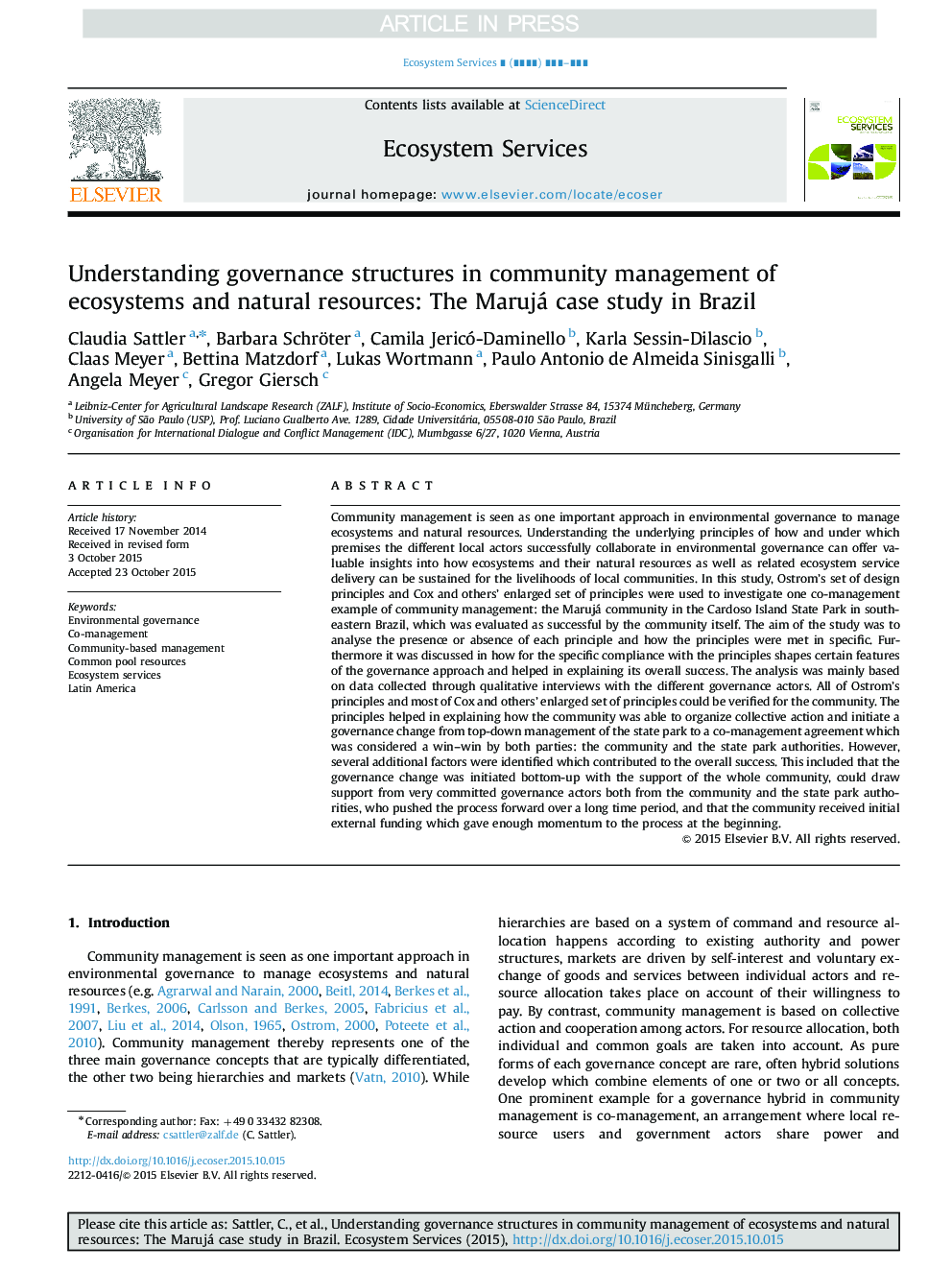| کد مقاله | کد نشریه | سال انتشار | مقاله انگلیسی | نسخه تمام متن |
|---|---|---|---|---|
| 6556672 | 161845 | 2015 | 10 صفحه PDF | دانلود رایگان |
عنوان انگلیسی مقاله ISI
Understanding governance structures in community management of ecosystems and natural resources: The Marujá case study in Brazil
دانلود مقاله + سفارش ترجمه
دانلود مقاله ISI انگلیسی
رایگان برای ایرانیان
کلمات کلیدی
موضوعات مرتبط
علوم زیستی و بیوفناوری
علوم کشاورزی و بیولوژیک
علوم کشاورزی و بیولوژیک (عمومی)
پیش نمایش صفحه اول مقاله

چکیده انگلیسی
Community management is seen as one important approach in environmental governance to manage ecosystems and natural resources. Understanding the underlying principles of how and under which premises the different local actors successfully collaborate in environmental governance can offer valuable insights into how ecosystems and their natural resources as well as related ecosystem service delivery can be sustained for the livelihoods of local communities. In this study, Ostrom's set of design principles and Cox and others' enlarged set of principles were used to investigate one co-management example of community management: the Marujá community in the Cardoso Island State Park in south-eastern Brazil, which was evaluated as successful by the community itself. The aim of the study was to analyse the presence or absence of each principle and how the principles were met in specific. Furthermore it was discussed in how for the specific compliance with the principles shapes certain features of the governance approach and helped in explaining its overall success. The analysis was mainly based on data collected through qualitative interviews with the different governance actors. All of Ostrom's principles and most of Cox and others' enlarged set of principles could be verified for the community. The principles helped in explaining how the community was able to organize collective action and initiate a governance change from top-down management of the state park to a co-management agreement which was considered a win-win by both parties: the community and the state park authorities. However, several additional factors were identified which contributed to the overall success. This included that the governance change was initiated bottom-up with the support of the whole community, could draw support from very committed governance actors both from the community and the state park authorities, who pushed the process forward over a long time period, and that the community received initial external funding which gave enough momentum to the process at the beginning.
ناشر
Database: Elsevier - ScienceDirect (ساینس دایرکت)
Journal: Ecosystem Services - Volume 16, December 2015, Pages 182-191
Journal: Ecosystem Services - Volume 16, December 2015, Pages 182-191
نویسندگان
Claudia Sattler, Barbara Schröter, Camila Jericó-Daminello, Karla Sessin-Dilascio, Claas Meyer, Bettina Matzdorf, Lukas Wortmann, Paulo Antonio de Almeida Sinisgalli, Angela Meyer, Gregor Giersch,